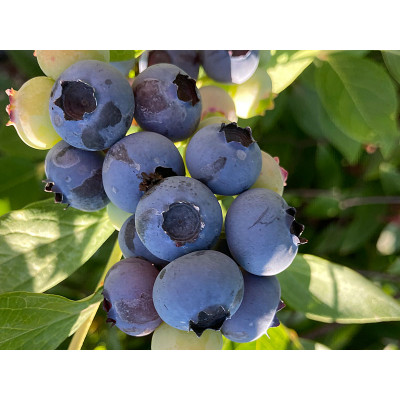Hlošina mnohokvetá ( eleagnus multiflora)


Nové


- všetky rastliny, ktoré máme v ponuke a viete si ich objednať, reálne máme skladom.
- štandardná doba dodania je 1-2 pracovné dni
- balíky posielame vždy v pondelok, v utorok a v stredu
- po dohode vieme rastliny poslať aj v štvrtok alebo v piatok (tieto dni štandardne neposielame z dôvodu, ak by sa vyskytol nejaký problém, aby balíky nestáli zbytočne v depe cez víkend)
- rastliny je možné si u nás vyzdvihnúť osobne na adrese Nová 11, Krakovany - iba po telefonickom dohovore (0902519100)
Položte otázku k tomuto produktu
Hlošina mnohokvetá ( eleagnus multiflora)
| Špecifikácie | |
| Výška pri predaji | 60cm |
| Kontajner | C2 |
| Predávame ako | 2 ročný |
| Doba dozrievania | Júl |
Štandardná doba dodania 1-2 pracovné dni.
Tovar posielame v Pondelok, Utorok, Stredu (po dohode aj vo Štvrtok, alebo v Piatok)
Tovar posielame v Pondelok, Utorok, Stredu (po dohode aj vo Štvrtok, alebo v Piatok)
Cena
17,50€
- Dostupnosť: Na sklade
- Model: Elaeagnus multiflora
Hlošina mnohokvetá (lat. Elaeagnus multiflora, anglicky cherry silverberry) má svoju domovinu vo východnej Ázii. Je tak súčasťou čínskej, japonskej aj kórejskej medicíny a miestnych záhrad, ako zdroj antioxidantov so známym prínosom pri úpravách krvného tlaku. V Číne jej hovoria „Gumi“. V Británii je to jednoducho čerešňa striebristá, kde je obľúbená v koláčoch. Hlošina mnohokvetá je však v prvom rade pre nás zaujímavý úžitkový krík kombinujúci okrasnú, aj úžitkovú funkciu pre úrodu bobuľového ovocia. Z diaľky môže rodiaci konár pripomínať čerešňu. Krík dorastá do výšky 3 metre a šírky 2 metrov. Rub listov, ktoré vzdialene pripomínajú hruškové listy, môže mať striebristý nádych. Obľubuje slnečnú polohu, v ktorej môže byť čiastočný polotieň. Výhodou rastliny je, že nie je náročná na pôdu a zvláda aj kamenisté, alebo ílovité pôdy. Najmä mladej rastline je však vhodné dopriať živiny a dostatok závlahy. V rámci svojho druhu sa vyznačuje výbornou odolnosťou voči škodcom, no zaujme aj mrazuvzdornosť uvádzaná do hodnoty -25°C. Niektorí predajcovia uvádzajú aj viac. Medzi pestovateľmi sú v posledných rokoch viditeľné zmienky o využití aj ako druhu do živého plotu. Rastlina toleruje občasné sucho a teda nepravidelnú zálievku. Profesionálni pestovatelia od USA po Európu neevidujú žiadne zásadné choroby, ani škodcov, ktorí by znižovali produkciu plodov a vitalitu rastliny.
Kvitne drobnými podlhovastými voňavými krémovými kvetmi počas apríla až mája. Kvety sú samoopelivé, z ktorých sa postupne vytvárajú plody s kôstkou. Postupne získavajú červenú farbu a úplnú zrelosť dosahujú približne v júli. Po dozretí získavajú sladkokyslú chuť. Plody po odkôstkovaní môžeme využiť v kuchyni na výrobu džemov, marmelád, dezertov, likérov, štiav, ale pokojne poslúžia aj na priamu konzumáciu v surovom stave. Napriek ázijskému pôvodu je prekvapivé, že ide o populárne ovocie v celej západnej Európe, predovšetkým vo Francúzsku, v Británii a na východnom pobreží USA.

















































































